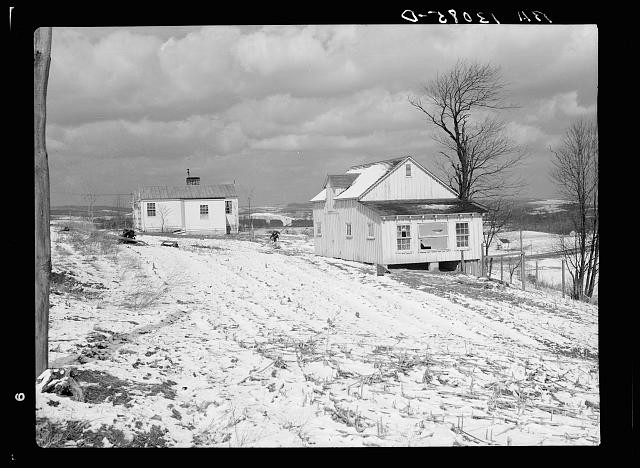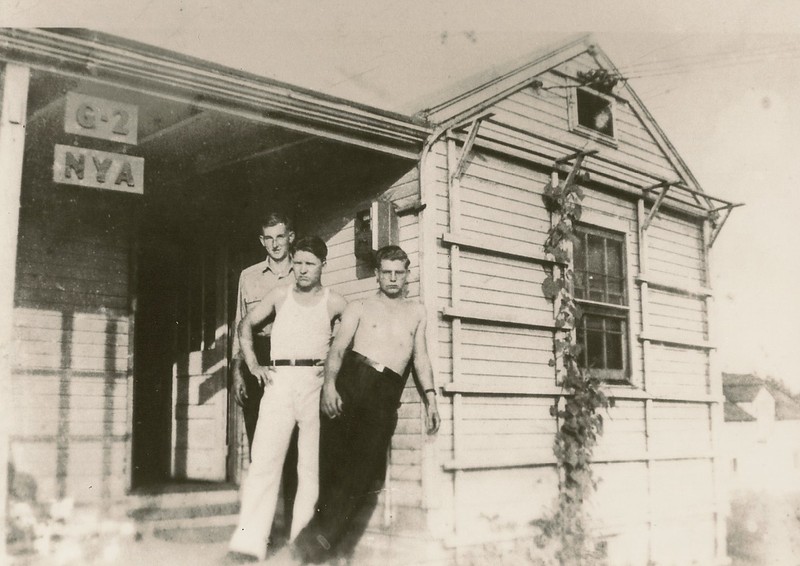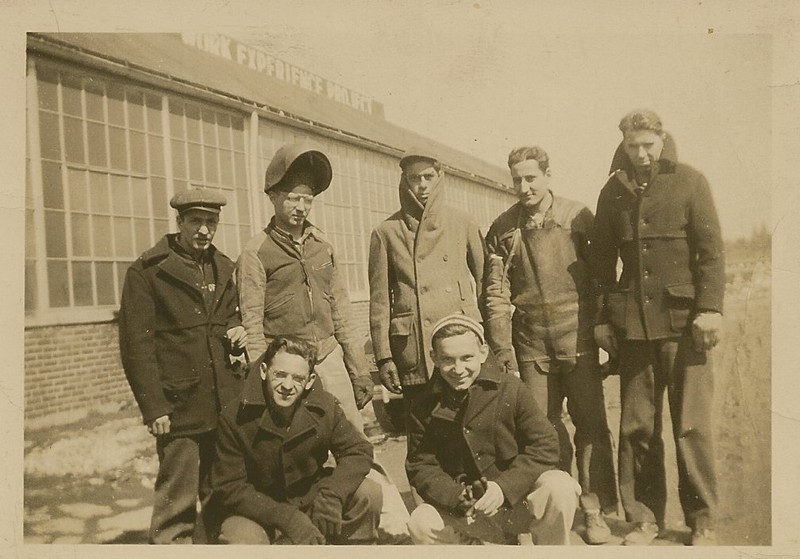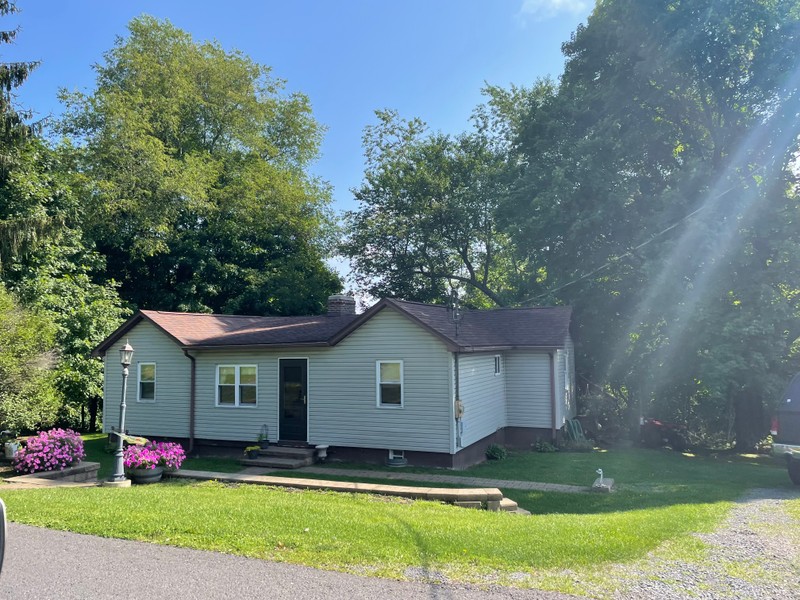G-2 Moats Hodgson House*
Introduction
Text-to-speech Audio
The G-2 Hodgson House was finished in 1934 and included land on both sides of G Road. The Floyd and Elizabeth Moats family moved out of G-2 in the late 1930s and it became one of ultimately twelve bunk houses for young members of the National Youth Administration. Here, 18 to 25 year olds learned skills in subjects like radio, stenography, machine shop, and welding. As WWII began, the classes focused more on war production work skills. They managed themselves under a youth governing system. Girls were also members of NYA but often stayed in their family homes.
Images
G-1 or G-2 in 1936

G-2 NYA Boys

NYA boys working at Arthurdale

G-2 Today

Backstory and Context
Text-to-speech Audio
In 1933, the National Youth Administration (NYA) was established as part of the Works Progress Administration (WPA). Eleanor Roosevelt was a strong advocate of this program as a way to “bring these young people into the active life of the community and make them feel that they are necessary” (Flynn 152). Though the NYA started as a student-aid program for students in high school and college, it later expanded to include young people who had been unable to finish their education and who would benefit from guidance and experience before entering the workforce.
There was much concern about the young adults who were coming of age during the Great Depression, and they were referred to by some as a “lost generation.” The lack of jobs and limited prospects that these young people faced caused some to worry that they would be attracted to fringe, zealous movements. By engaging young people with their communities, government officials hoped to cultivate national pride and a sense of purpose. The NYA provided vocational training along with homemaking skills but also addressed etiquette like punctuality, appropriate dress for work, and respect for authority. Some NYA members traveled and lived in camps like the Civilian Conservation Corps (CCC), but other, particularly young women, continued to live at home.
Though the NYA was disbanded in 1943, its legacy lives on through a variety of youth-focused programs around the country, most notably AmeriCorps, which was created during the Clinton administration. However the Student Conservation Association is the oldest of these modern groups, and there are other state-specific youth programs that draw inspiration from the New Deal era. Many of these modern organizations were founded or supported by former NYA and CCC members who recognized the benefits they received from these earlier programs.
Sources
Arthurdale Heritage, Preserving Arthurdale, WV – Eleanor Roosevelt's New Deal Community. Arthurdale Heritage Inc.. Accessed March 20, 2017. http://www.arthurdaleheritage.org/.
Flynn, Kathryn & Richard Polese. The New Deal: A 75th Anniversary Celebration. Gibbs Smith, 2008. Pgs. 152-155, 157
Haid, Stephen Edward. "Arthurdale: An Experiment in Community Planning, 1933-1947." Master's thesis, West Virginia University, 1975.
Maloney, C. J. Back to the Land: Arthurdale, FDRs New Deal, and the Costs of Economic Planning. John Wiley & Sons, 2013.
Patterson, Stuart. “A New Pattern of Life: The Public Past and Present of Two New Deal Communities.” Doctoral Thesis, Emory University, 2006.
Penix, Amanda Griffith. Images of America: Arthurdale. Arcadia Publishing, 2007.
Ward, Bryan. A New Deal for America. Arthurdale Heritage Inc., 1995
